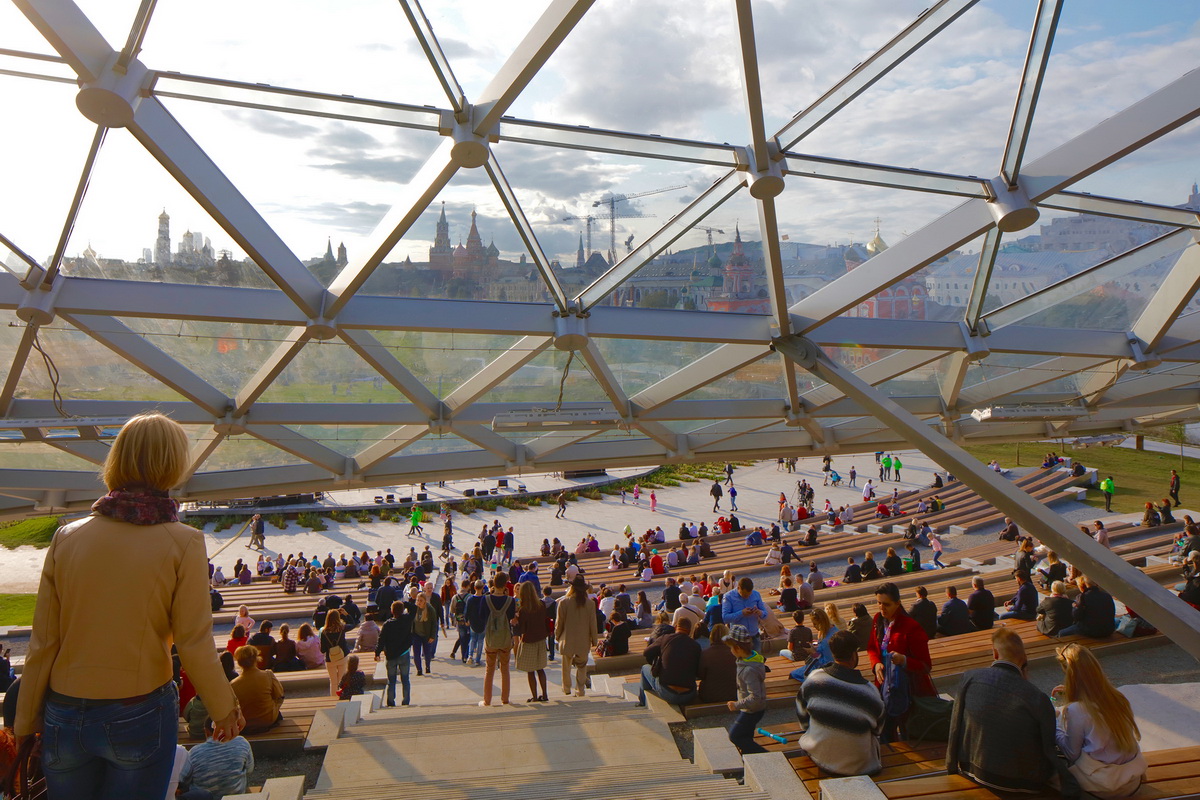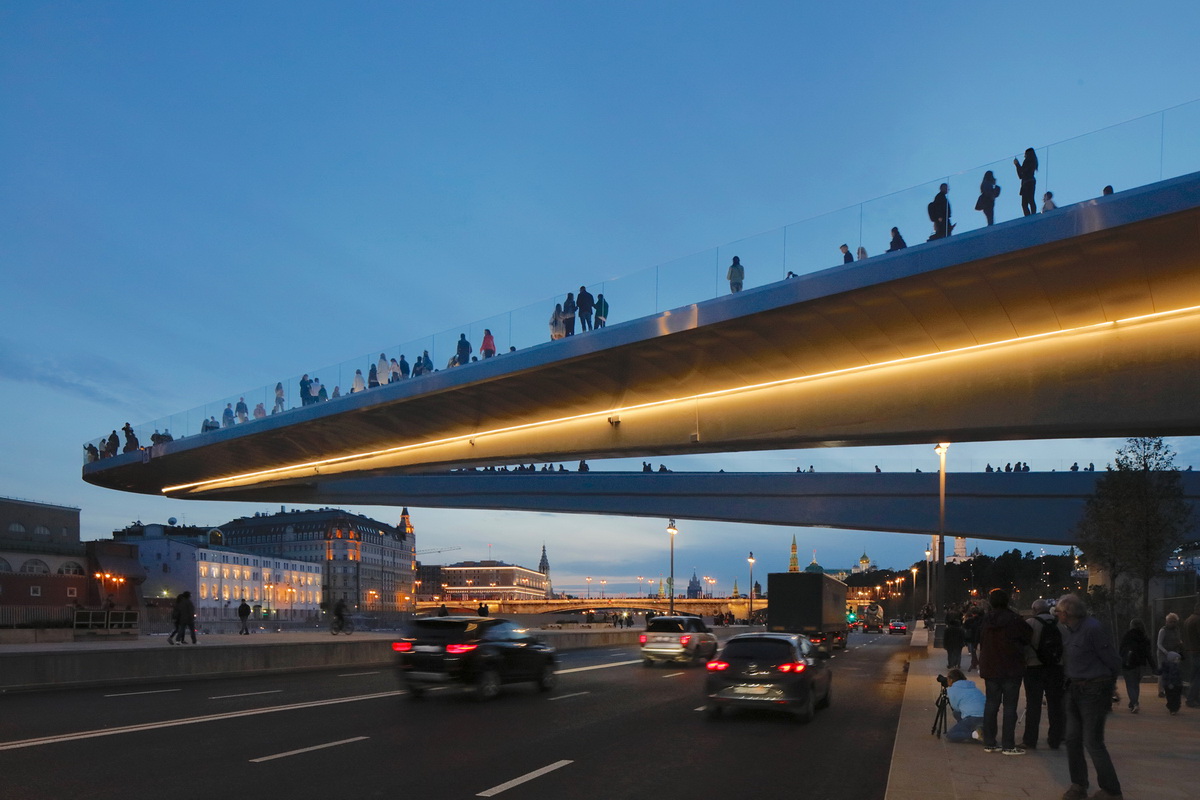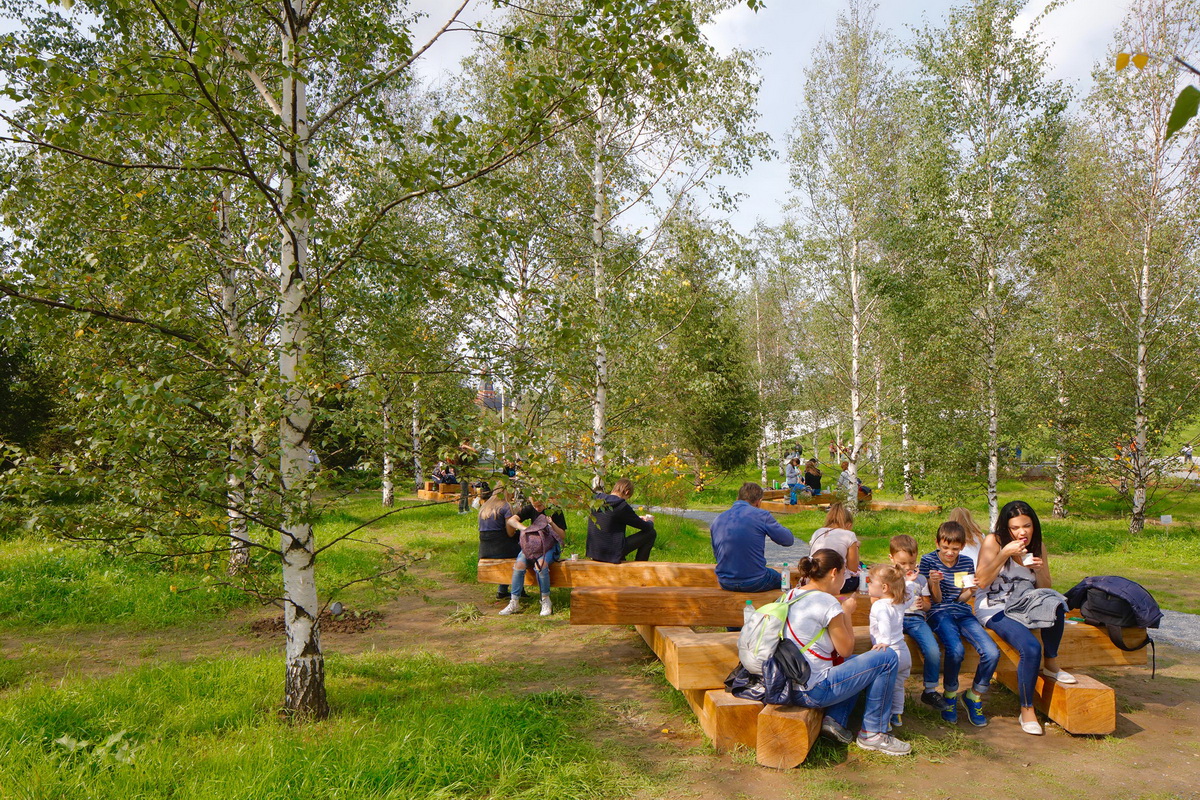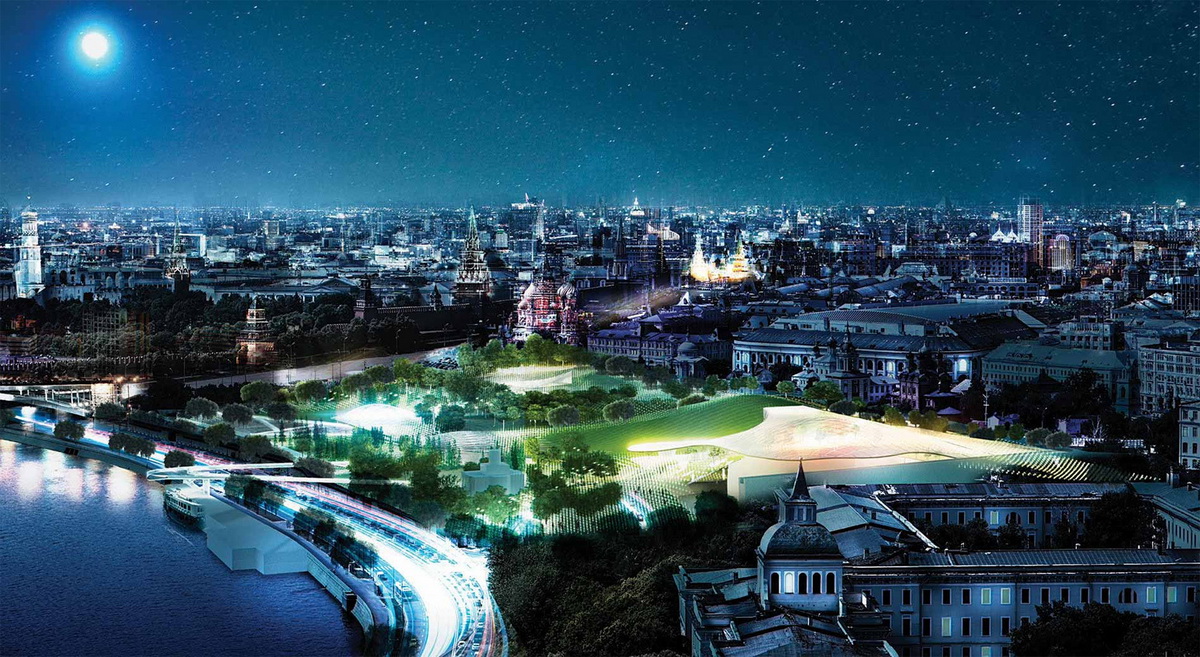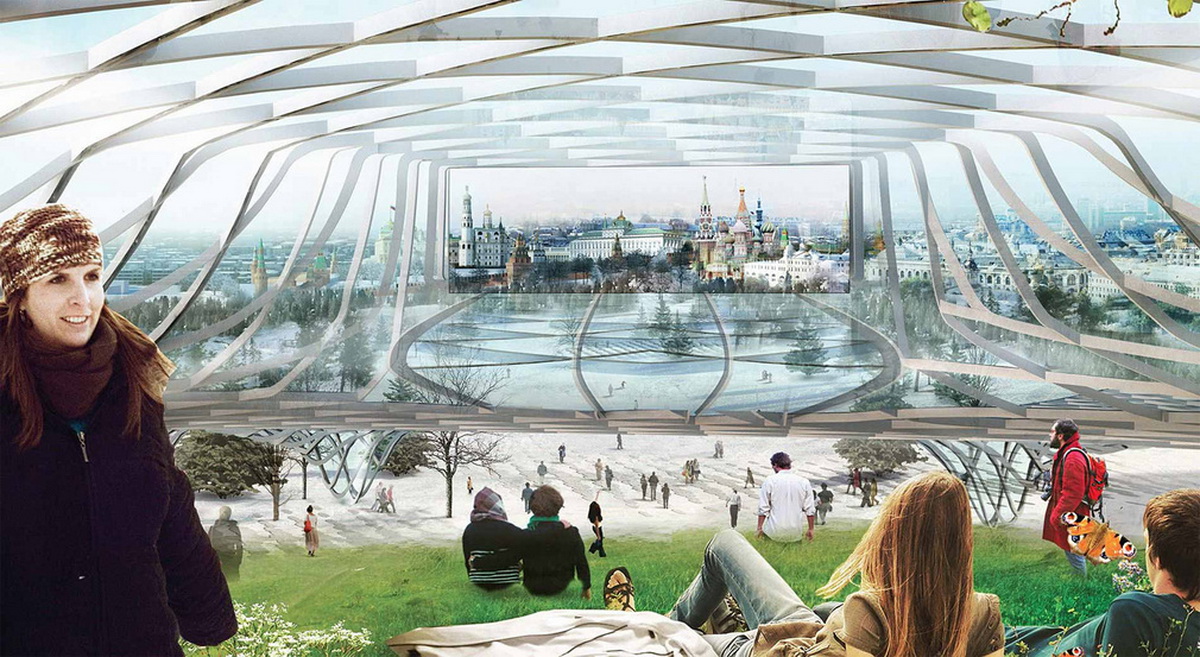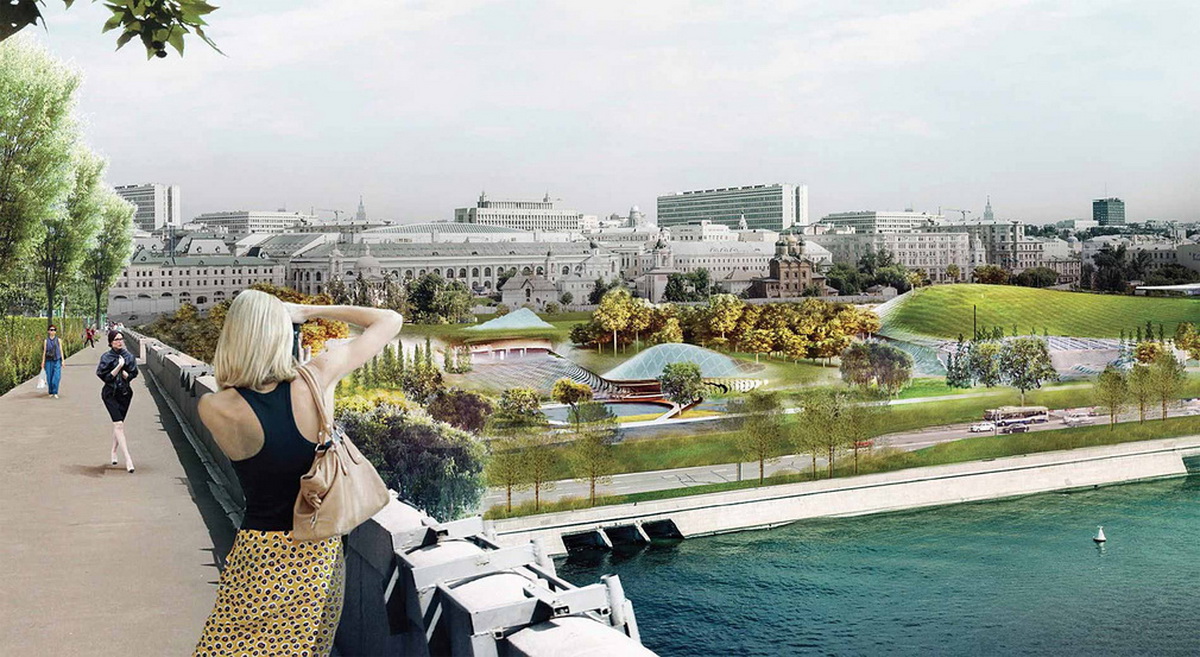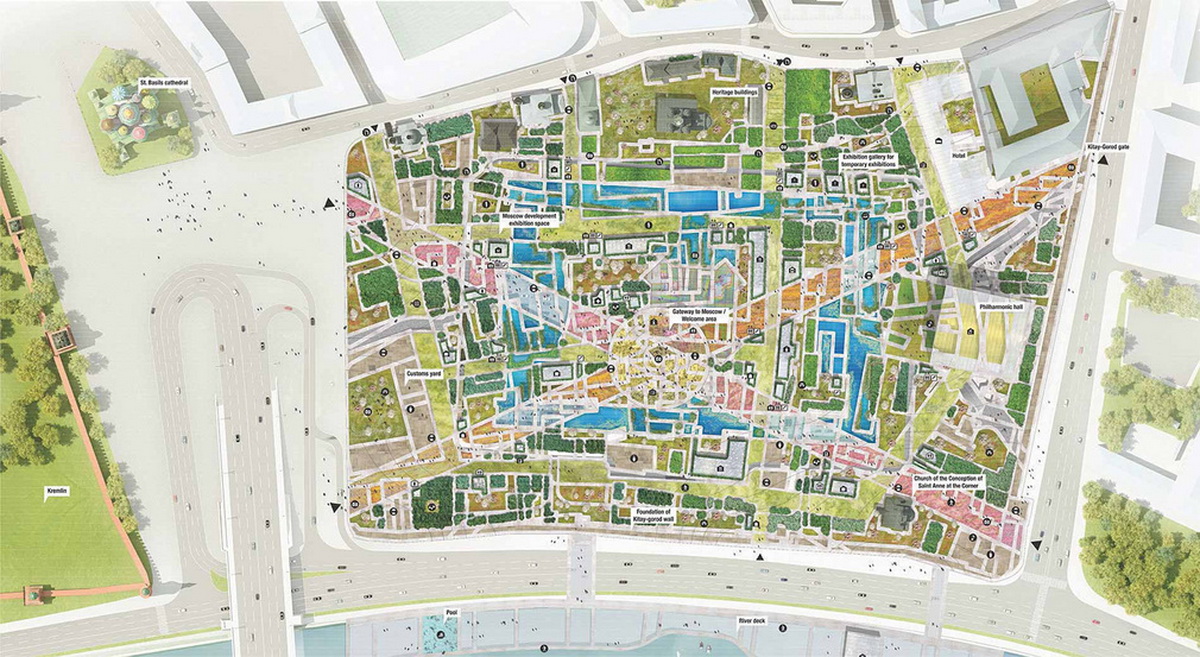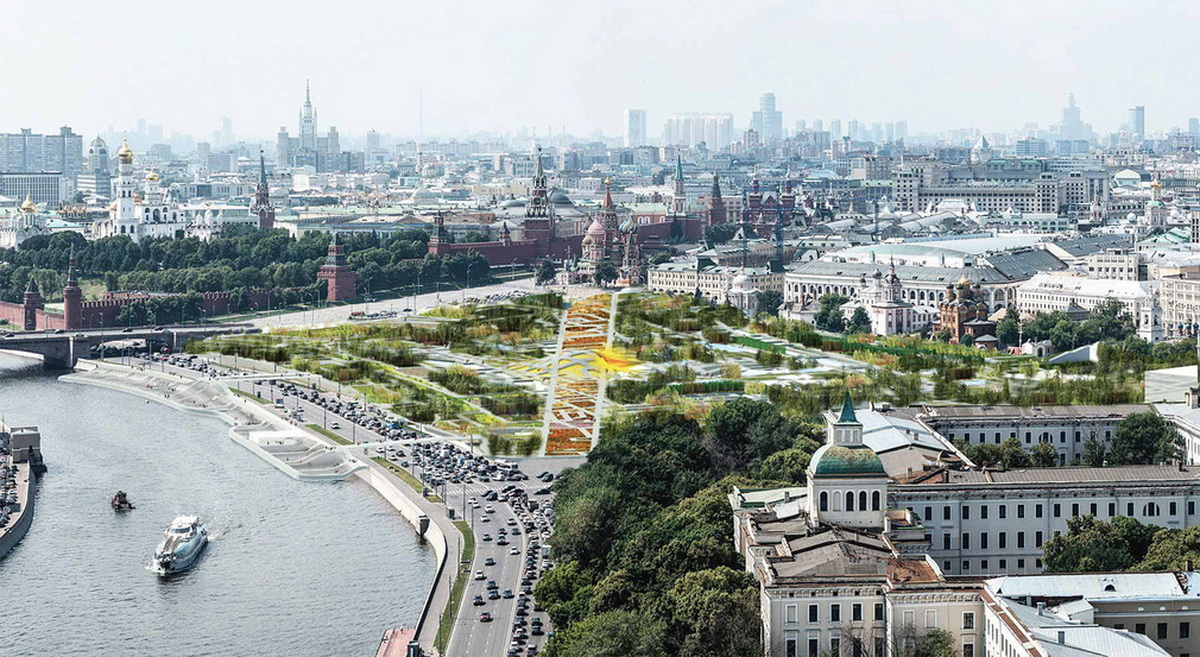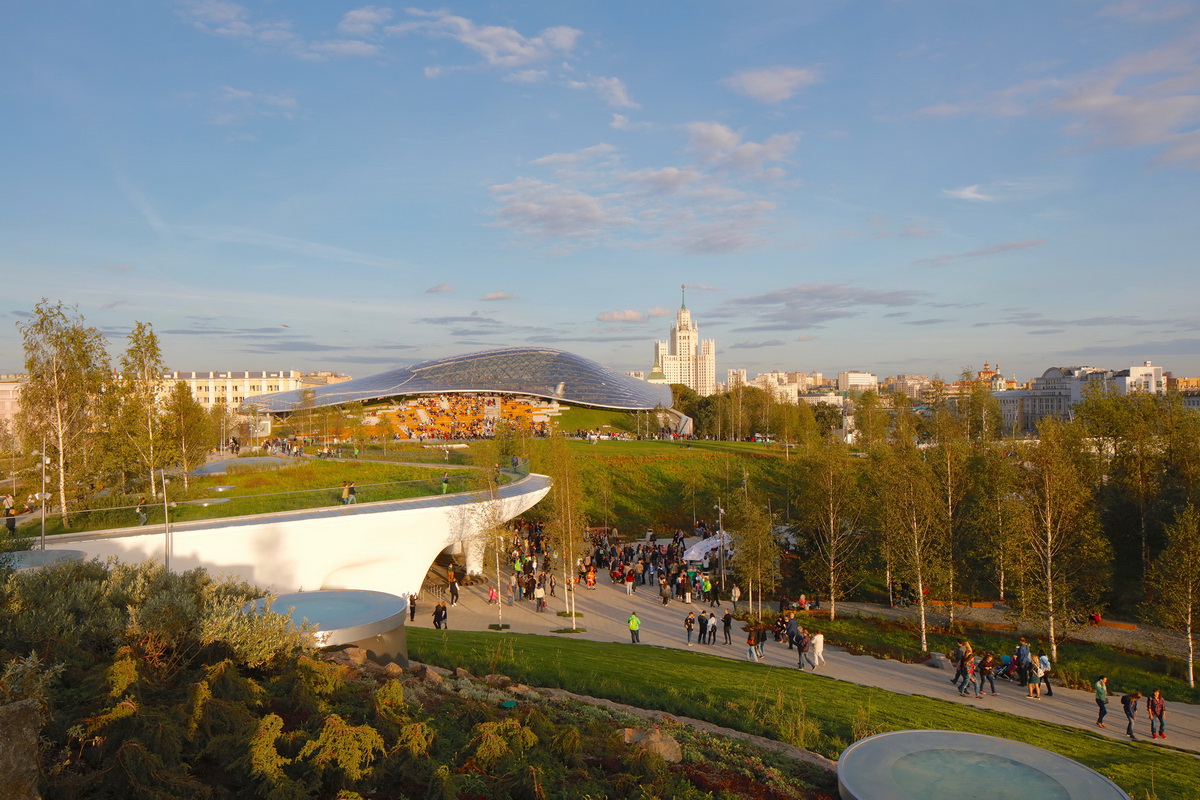
Zaryadye Park celebrates substantial completion with a civic ceremony designed by an international consortiumDuring last week’s Moscow City Day festivities, Zaryadye Park celebrated substantial completion of the 35 acre park with a civic ceremony that opened major portions of the park to locals as construction continues. The park which features an overlook cantilevering 70m over Moscow River, five pavilions, two amphitheaters and a philharmonic concert hall is scheduled to reach full completion this fall. Centrally located, steps away from St. Basil’s Cathedral, Red Square and the Kremlin, Zaryadye Park will be the first large scale park to open in Moscow in the past fifty years. In 2012, the City of Moscow and Chief Architect Sergey Kuznetsov organized an international design competition to transform this historically commercial territory into a public park. A design consortium led by Diller Scofidio + Renfro (DS+R) in partnership with Hagreaves Associates and Citymakers was selected out of ninety submissions representing 27 different countries.
Charles Renfro, partner at Diller Scofidio + Renfro, commented: “Zarydaye Park provides a public space that resists easy categorization. It is at once park, urban plaza, social space, cultural amenity, and recreational armature. In order to maintain the maximum level of accessibility, our design overlays landscape onto the 14,000 sq m of enclosed program required by the competition brief. The resulting simultaneity generates a series of elemental face offs between the natural and the artificial, urban and rural, interior and exterior.”
Zaryadye Park intertwines landscape and hardscape to create a Wild Urbanism, introducing a new offering to complement Moscow’s historically formal, symmetrical park spaces. A custom stone paving system knits hardscape and landscape together generating a blend rather than a border to encourage visitors to meander freely. Traversing between each corner of the park, visitors encounter terraces that recreate and celebrate four diverse, regional landscapes found in Russia. The sectional overlay also facilitates active and passive climate control strategies that ensure visitors can enjoy the park through all seasons. Natural zones provide places of gathering, repose and observation, in concert with performance spaces and enclosed cultural pavilions. In addition to these programmed destinations, a series of vista points provide a frame for the Moscow cityscape to be rediscovered anew. Each visitor’s experience is tailor made for them, by them.Zaryadye Park was designed by an international consortium that brought together the experience of firms making public spaces around the world including: Diller Scofidio + Renfro (USA), Hargreaves Jones (USA), Citymakers (Russia), Transsolar (Germany), Buro Happold (United Kingdom), Central Park Convervancy (USA), Directional Logic (USA), ARUP (USA), Arteza (Russia), MAHPI (Russia), and Mosinzhproekt (Russia). Over the past four years, the team has applied their approach to fostering inclusivity, openness, access and porosity to the project.
Mary Margaret Jones, a senior principal and president at Hargreaves Associates, described the firm’s approach to Zaryadye Park, commenting, “Our ambition was for this central park in Moscow to express itself as a national park for Russia at large. The site’s natural slope lent itself to a physical palette that samples Russia’s distinct regional landscapes: tundra, steppe, forest and wetland forest.” Each landscape zone utilizes its strategic location to optimize views and exposure, while the natural slope facilitates storm-water management across the site. The horticulture of each zone evokes its regional landscape but does so with plantings that have proven to thrive in Moscow’s Climate.”Petr Kudryavtsev and Andrey Grinev, founding partners at Citymakers, added: “We have integrated holistic strategies to keep the park activated year round including: constructed environments that temper the city’s harsh climate; social and cultural programs geared towards nature exploration; and a long term, sustainable management model. The park provides an important example of international collaboration, merging best practices from around the world with the particularities of Moscow to offer a prototype for public space for other cities in Northern regions.”
Moscow Chief Architect Sergei Kuznetsov, who organized the international competition in collaboration with Strelka KB, NIIPI Genplana of Moscow and the Moscow Committee for Architecture, commented: “An important feature of Zaryadye is integration. The park was created at the junction of the latest landscape design trends, intricate construction solutions, and state of theart building technologies. At Zaryadye, the cultural heritage monuments — the Chambers of the Old English Court, Church of the Conception of St. Anna, Kitay gorod wall, Znamensky Monastery, the chambers of Romanov boayrs, and others — sit alongside the new “invisible” architecture. The park’s dynamic and universal infrastructure aims to transform Zaryadye into a platform for the active integration of different cultures and social groups; a new international landmark; and a hub for creativity, where new ideas and knowledge are generated.”
Other Design
SEE MORE dsrny


